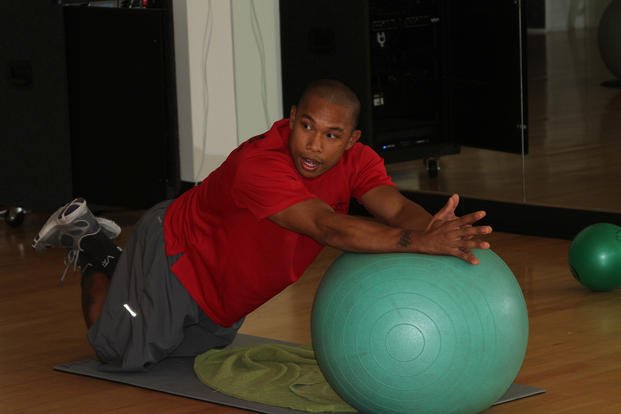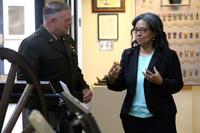If you did not know, Pilates has a 100-year history and was created by the jack-of-all-trades trainer and inventor Joseph Pilates. Pilates was involved deeply in gymnastics, boxing, martial arts, yoga, tai chi, calisthenics and other forms of resistance training. You can see many of these influences in his early programs. In 1925, Pilates moved from Germany to New York, where he further developed his program as it grew to become the premier professional dance training.
Pilates offers more than calisthenics. Its founder holds more than 20 patents for exercise equipment and was one of the first creators of machines for exercise. Pilates is not just a floor program; it also offers creative uses of balls, chairs, bands and other devices.
Military PT Similarities
Look below at six common exercises used in military PT, even SEAL training, and you’ll see similar exercises in the Pilates mat program. The difference is that in Pilates, you do these exercises with much more grace, pointed toes, longer isometric holds and more focus on flexibility.
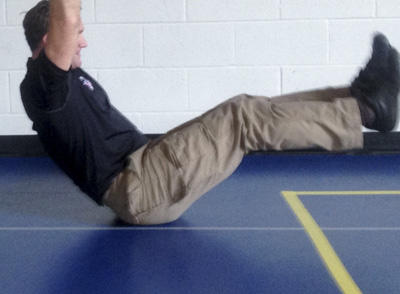 |
V-Ups
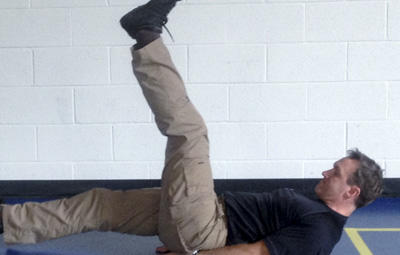 |
Flutter kicks
 |
Atomic sit-ups
 |
Bicycle crunches
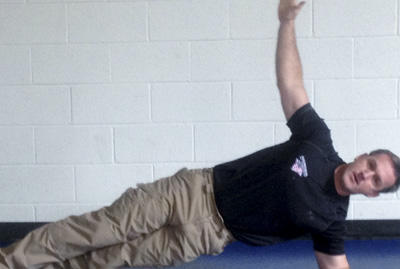 |
Side plank
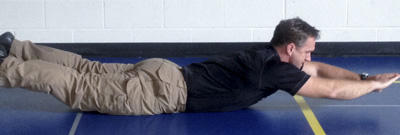 |
Swimmers
But the goal for mastering these exercises is the same: getting a stronger and more flexible body through a focus on core development. If you look at Pilates movements, you will see even more similarities to dynamic stretching, static stretching, plyometrics and calisthenics. All have been part of military PT programs since World War II.
The movements in Pilates are focused on deep breathing during exertion; slow, deliberate movements; and stretches to develop full-body strength, which makes the muscles long and lean. Think in terms of quality movements instead of quantity repetitions.
The calisthenics in military training programs are less focused on the aforementioned and more on faster repetitions, especially for testing. However, by practicing slower, deliberate movements during your PT workouts, you will increase muscle tone and improve your flexibility. Plus, your PT scores still will be above average if you are exercising 4-5 times per week.
For more mat-type exercises used by the military, see my Lower Back Plan.
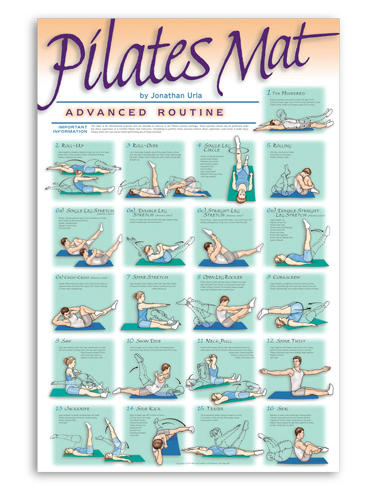 |
Other Benefits from Utilizing Pilates-Based Fitness Programs
Body awareness: In the military, we know what situational awareness is, but having a better understanding of our internal awareness benefits us at work and play.
Stronger core: With a focus on abdominal, lower back, upper back and up/down/left/right movements, you will have stronger core musculature. This will enable you to move more easily, with less likelihood of pain and injury.
Body control: How important is the control of your body and its movements? Very, especially when working in a profession that relies on your health and fitness, such as military, police or firefighting. Your movements and ability may one day dictate how you survive dangerous situations.
Flexibility: Moving fluidly without pain or discomfort and utilizing full range of motion of our joints aren’t always necessary, but when it is, it will save you from injury.
Pilates workouts must work. Here is a quote from a very confident Joseph Pilates at the age of 86:
"I must be right. Never an aspirin. Never injured a day in my life. The whole country, the whole world, should be doing my exercises. They'd be happier."
Stew Smith is a former Navy SEAL and fitness author certified as a Strength and Conditioning Specialist (CSCS) with the National Strength and Conditioning Association. Visit his Fitness eBook store if you’re looking to start a workout program to create a healthy lifestyle. Send your fitness questions to stew@stewsmith.com.
Want to Learn More About Military Life?
Whether you're thinking of joining the military, looking for fitness and basic training tips, or keeping up with military life and benefits, Military.com has you covered. Subscribe to Military.com to have military news, updates and resources delivered directly to your inbox.
